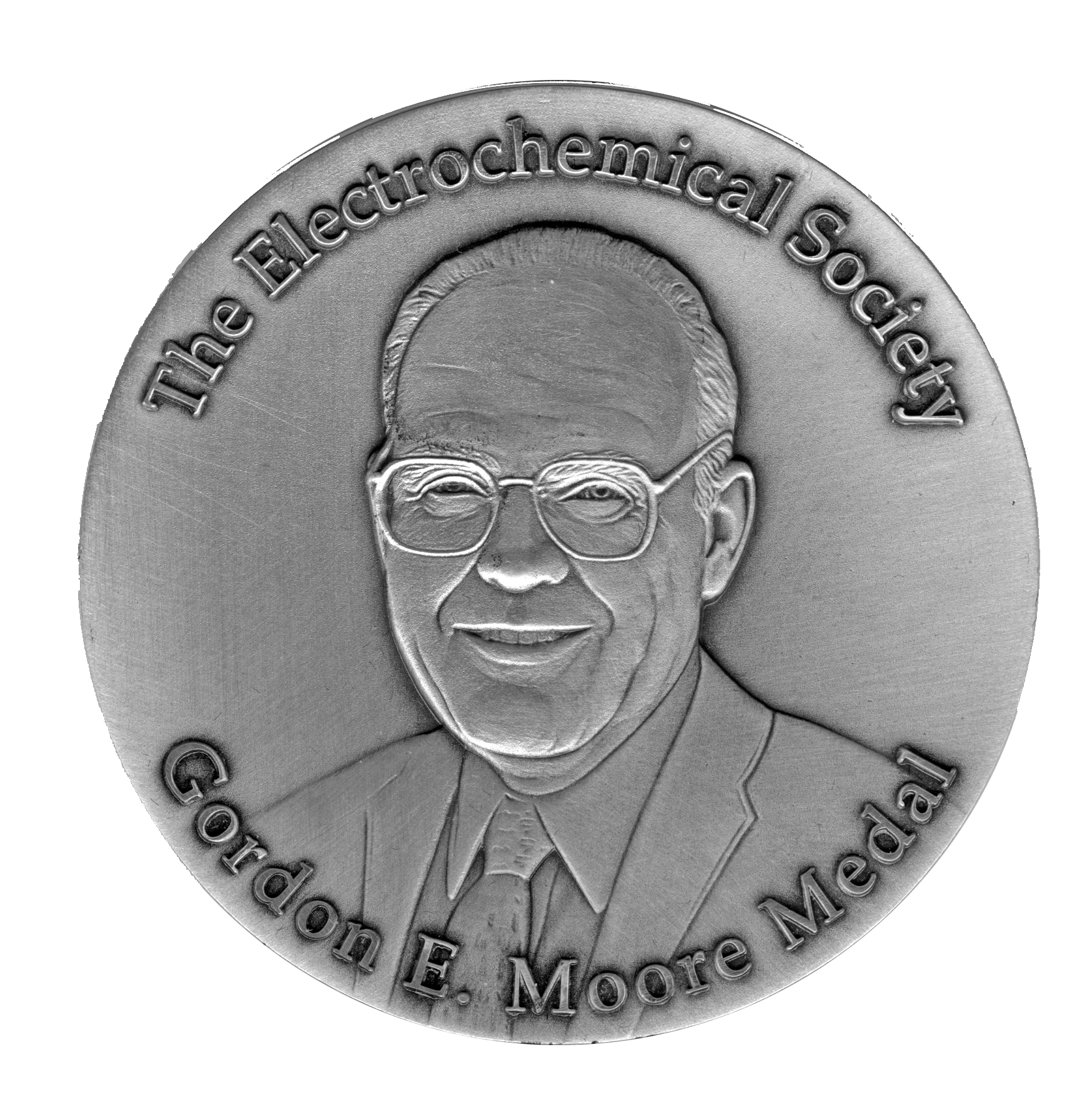 Nomination period: March 15 – June 15, even years
Nomination period: March 15 – June 15, even years
Presented: Spring meeting, odd years
The Gordon E. Moore Medal for Outstanding Achievement in Solid State Science & Technology was established in 1971 as the Solid State Science and Technology Award for distinguished contributions to the field of solid state science and technology. In 2005, the award was renamed in honor of Gordon E. Moore.
Eligibility criteria
The recipient has made outstanding contributions to the fundamental understanding and technological applications of solid state materials, phenomena, and processes.
ECS membership is not required.
Nomination guidelines
A complete nomination package includes:
- Completed electronic Award Nomination Form;
- At least two, but not more than five letters of support (one page in length);
- Optional materials:
- Curriculum vitae
- Publications list
- Other pertinent information supporting and strengthening the candidate’s nomination
Nominations are considered in effect for two consecutive award cycles.
This award’s subcommittee members may not submit nominations or letters of support during their terms.
Award
The award consists of:
- Silver medal featuring the recipient’s name;
- Plaque bearing a replica of the medal, featuring the recipient’s name;
- USD $7,500;
- Complimentary meeting registration for the award recipient and companion;
- Dinner held in the recipient’s honor during the designated meeting;
- ECS Life Membership.
Recipient obligations
At the designated Society meeting at which the award is presented, the recipient delivers a general address on a subject related to the contributions for which the award is given.
About Gordon E. Moore
Gordon E. Moore (1929-2023) was the co-founder and chairman of Intel Corporation. Dr. Moore established what is now known as Moore’s law: the observation published in Electronics Magazine in 1965 that the number of transistors per square inch on integrated circuits had doubled every year since the integrated circuit was invented. While originally intended in 1965 as a rule of thumb, Moore’s law has become the guiding principle for the industry to deliver ever more powerful semiconductor chips at proportionate decreases in cost.
For the first time in public, Dr. Moore’s articulated his vision—that the number of transistors per chip would double every two years—at a 1964 ECS San Francisco Section meeting. Read more. Dr. Moore joined the Society in 1957 and was named ECS Honorary Member in 2007.
Questions
Contact awards@electrochem.org with questions or for more information.
Review the Society’s robust Honors & Awards and Fellowships & Grants Programs.
Recipients
2009-2025
Hideo Hosono (2025)
Fred Roozeboom(2023)
Hiroshi Iwai (2021)
David Lockwood (2019)
Paul Kohl (2017)
Yue Kuo (2015)
Fan Ren (2013)
Stephen Pearton (2011)
C. Grant Willson (2009)
1991-2007
Tak H. Ning (2007)
Dennis Hess (2005)
Richard B. Fair (2003)
Arnold Reisman (2001)
Isamu Akasaki (1999)
Karl E. Spear (1997)
Wayne L. Worrell (1995)
Bruce E. Deal (1993)
James D. Plummer (1991)
1973-1989
James F. Gibbons (1989)
Alfred Y. Cho (1987)
Jerry M. Woodall (1985)
Nick Holonyak, Jr. (1983)
Gerald L. Pearson (1981)
Morton B. Panish (1979)
Robert N. Hall (1977)
Harry C. Gatos (1975)
William G. Pfann(1973)
